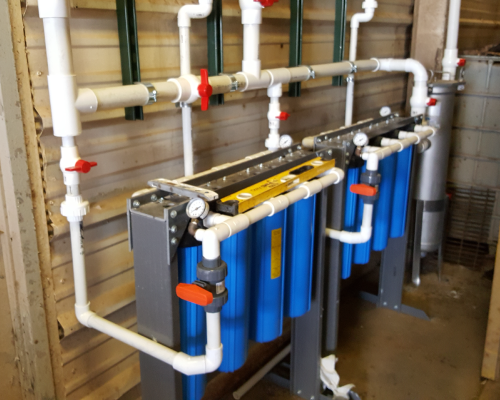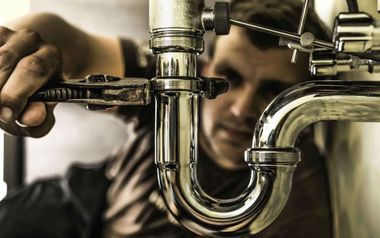Anatomy of Your House's Plumbing System: How It Matters
Anatomy of Your House's Plumbing System: How It Matters
Blog Article
Right here on the next paragraphs you will find a lot of excellent help and advice regarding Understanding Your Home's Plumbing Anatomy.

Understanding just how your home's plumbing system works is vital for every single homeowner. From providing tidy water for alcohol consumption, food preparation, and bathing to safely getting rid of wastewater, a properly maintained pipes system is vital for your family's health and convenience. In this thorough overview, we'll explore the elaborate network that comprises your home's pipes and offer ideas on upkeep, upgrades, and dealing with usual concerns.
Intro
Your home's plumbing system is more than simply a network of pipelines; it's a complicated system that guarantees you have access to tidy water and reliable wastewater removal. Understanding its parts and how they interact can aid you prevent costly repair services and guarantee whatever runs smoothly.
Fundamental Parts of a Plumbing System
Pipes and Tubes
At the heart of your plumbing system are the pipes and tubes that lug water throughout your home. These can be constructed from different materials such as copper, PVC, or PEX, each with its advantages in terms of sturdiness and cost-effectiveness.
Fixtures: Sinks, Toilets, Showers, etc.
Fixtures like sinks, commodes, showers, and tubs are where water is utilized in your home. Recognizing just how these fixtures connect to the pipes system assists in identifying problems and intending upgrades.
Shutoffs and Shut-off Points
Shutoffs control the circulation of water in your plumbing system. Shut-off valves are crucial throughout emergencies or when you need to make fixings, enabling you to separate parts of the system without interrupting water flow to the whole home.
Water Supply System
Key Water Line
The primary water line attaches your home to the community water system or a private well. It's where water enters your home and is distributed to various components.
Water Meter and Pressure Regulatory Authority
The water meter steps your water usage, while a stress regulator ensures that water moves at a risk-free pressure throughout your home's pipes system, preventing damages to pipelines and components.
Cold Water vs. Hot Water Lines
Recognizing the difference between cold water lines, which provide water directly from the major, and warm water lines, which carry warmed water from the water heater, helps in fixing and planning for upgrades.
Water drainage System
Drain Water Lines and Traps
Drain pipelines lug wastewater away from sinks, showers, and bathrooms to the sewage system or sewage-disposal tank. Catches avoid drain gases from entering your home and also catch debris that can cause clogs.
Air flow Pipes
Air flow pipes enable air right into the drainage system, stopping suction that could slow down water drainage and cause catches to vacant. Appropriate air flow is important for maintaining the integrity of your pipes system.
Importance of Appropriate Water Drainage
Ensuring appropriate drain prevents back-ups and water damages. Frequently cleansing drains and keeping traps can avoid pricey repair work and expand the life of your plumbing system.
Water Heating System
Kinds Of Hot Water Heater
Water heaters can be tankless or conventional tank-style. Tankless heating units warm water on demand, while tanks keep warmed water for prompt use.
Upgrading Your Plumbing System
Factors for Upgrading
Updating to water-efficient fixtures or changing old pipelines can improve water quality, minimize water costs, and boost the worth of your home.
Modern Pipes Technologies and Their Advantages
Explore technologies like smart leak detectors, water-saving bathrooms, and energy-efficient hot water heater that can save cash and reduce environmental impact.
Expense Factors To Consider and ROI
Determine the in advance prices versus long-lasting financial savings when thinking about plumbing upgrades. Lots of upgrades pay for themselves with decreased utility expenses and fewer repair services.
Just How Water Heaters Connect to the Pipes System
Recognizing just how hot water heater connect to both the cold water supply and hot water distribution lines helps in diagnosing issues like insufficient hot water or leakages.
Upkeep Tips for Water Heaters
Routinely purging your water heater to get rid of sediment, checking the temperature settings, and checking for leaks can extend its lifespan and boost power performance.
Typical Pipes Concerns
Leakages and Their Reasons
Leakages can happen due to aging pipelines, loosened installations, or high water pressure. Dealing with leaks immediately protects against water damages and mold and mildew development.
Clogs and Clogs
Clogs in drains and toilets are commonly triggered by flushing non-flushable products or a buildup of grease and hair. Utilizing drain screens and being mindful of what decreases your drains can stop clogs.
Signs of Pipes Troubles to Look For
Low water pressure, slow drains, foul odors, or unusually high water costs are indicators of possible plumbing issues that ought to be dealt with quickly.
Pipes Upkeep Tips
Routine Evaluations and Checks
Schedule annual plumbing examinations to capture issues early. Look for signs of leakages, rust, or mineral accumulation in faucets and showerheads.
Do It Yourself Upkeep Tasks
Basic tasks like cleaning faucet aerators, checking for commode leakages making use of color tablet computers, or insulating exposed pipes in cold climates can prevent significant pipes issues.
When to Call an Expert Plumber
Know when a pipes concern calls for expert competence. Trying intricate repair work without proper knowledge can bring about even more damages and greater repair work costs.
Tips for Decreasing Water Usage
Simple behaviors like dealing with leaks promptly, taking much shorter showers, and running full loads of laundry and recipes can conserve water and reduced your energy expenses.
Eco-Friendly Plumbing Options
Consider lasting plumbing products like bamboo for floor covering, which is durable and green, or recycled glass for kitchen counters.
Emergency Preparedness
Actions to Take During a Pipes Emergency
Know where your shut-off shutoffs are located and just how to turn off the water system in case of a burst pipeline or significant leak.
Relevance of Having Emergency Get In Touches With Handy
Keep call info for neighborhood plumbings or emergency situation solutions readily available for fast feedback throughout a plumbing situation.
Environmental Influence and Conservation
Water-Saving Fixtures and Devices
Setting up low-flow taps, showerheads, and toilets can significantly decrease water use without sacrificing efficiency.
Do It Yourself Emergency Fixes (When Suitable).
Temporary fixes like utilizing duct tape to patch a dripping pipeline or placing a container under a trickling faucet can decrease damage up until a specialist plumber shows up.
Final thought.
Recognizing the composition of your home's pipes system encourages you to maintain it successfully, saving money and time on fixings. By following regular maintenance regimens and remaining informed regarding modern-day pipes technologies, you can ensure your plumbing system operates effectively for several years ahead.
HOW YOUR PLUMBING SYSTEM WORKS
Which Pipes Do What?
Blue lines = fresh water supply entering the building Red lines = hot water supply entering the building Grey lines = pipes carrying waste away from the building and venting pipes carrying gases away from the building (through the roof) YOUR MAIN PLUMBING SYSTEMS
There are two main plumbing systems that support your home s basic plumbing needs one that brings clean water into your home, and one that sends dirty water away from your home. Connected to the toilet, bath, shower, and other faucets in your home, these two systems keep your water flowing in the right directions.
ACCESSING FRESH WATER
Fresh and clean water is brought into your home through the main water supply line . Filtered through one pipe, this water is pressured to flow into the various fixtures in your home at any given time.
This water can be sourced from a well located on your property, a pond or river (mostly cottages), or, as in most cases, from the city s municipal water treatment centre. However, it is important to note that water that is untreated, such as the water siphoned from ponds or rivers, may not be safe to drink. Personal water supplies always need to be treated for hardness and contaminants before consumed.
MUNICIPAL WATER SUPPLIES
Improve taste and odour Remove sediment Eliminate hardness Reduce chlorine COLD WATER SUPPLY VS. HOT WATER SUPPLY
Cold water flows into your home or building through the service line, which then distributes hot or cold water to your fixtures. This line is most commonly run through a central column that runs floor to floor. Hot water runs in short and straight pipes as the longer the pipeline, the more heat that will be lost in the transfer. Having shorter pipes also allows residents to access hot water more quickly.
WASTE WATER SYSTEM
Your wastewater system is divided into two parts pipes that send wastewater away from your home and venting pipes that send sewer gas away from your home. Sewage water travels through pipes that flush the water and waste towards local sewers that are operated and managed by your city or town. Most sewer systems rely on gravity to move the wastewater to where it needs to go.
The further away from your toilet or sink, the larger wastewater pipes become. This allows for waste to be disposed of from various parts of your home or business at once without pipe blockages. The angle and flow of these pipes are also essential for keeping your waste pipes clear of build up.
https://harrisplumbing.ca/how-your-home-plumbing-system-works/

I'm just very intrigued by Anatomy of a House: Understanding the Components and I am praying you appreciated my piece. Are you aware of somebody who is enthusiastic about the subject? Why not share it. Thank-you for taking the time to read it.
Schedule A Service Report this page